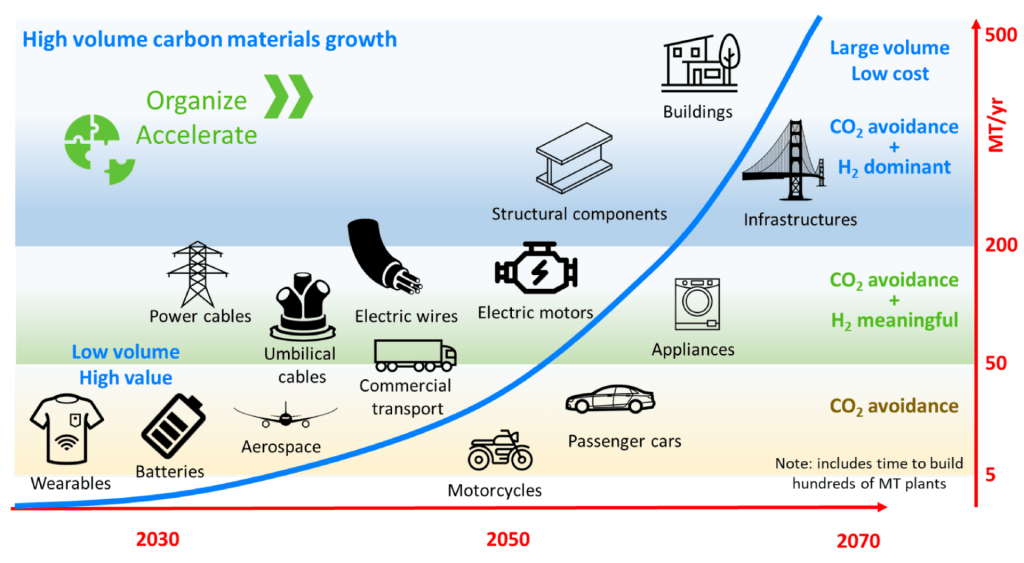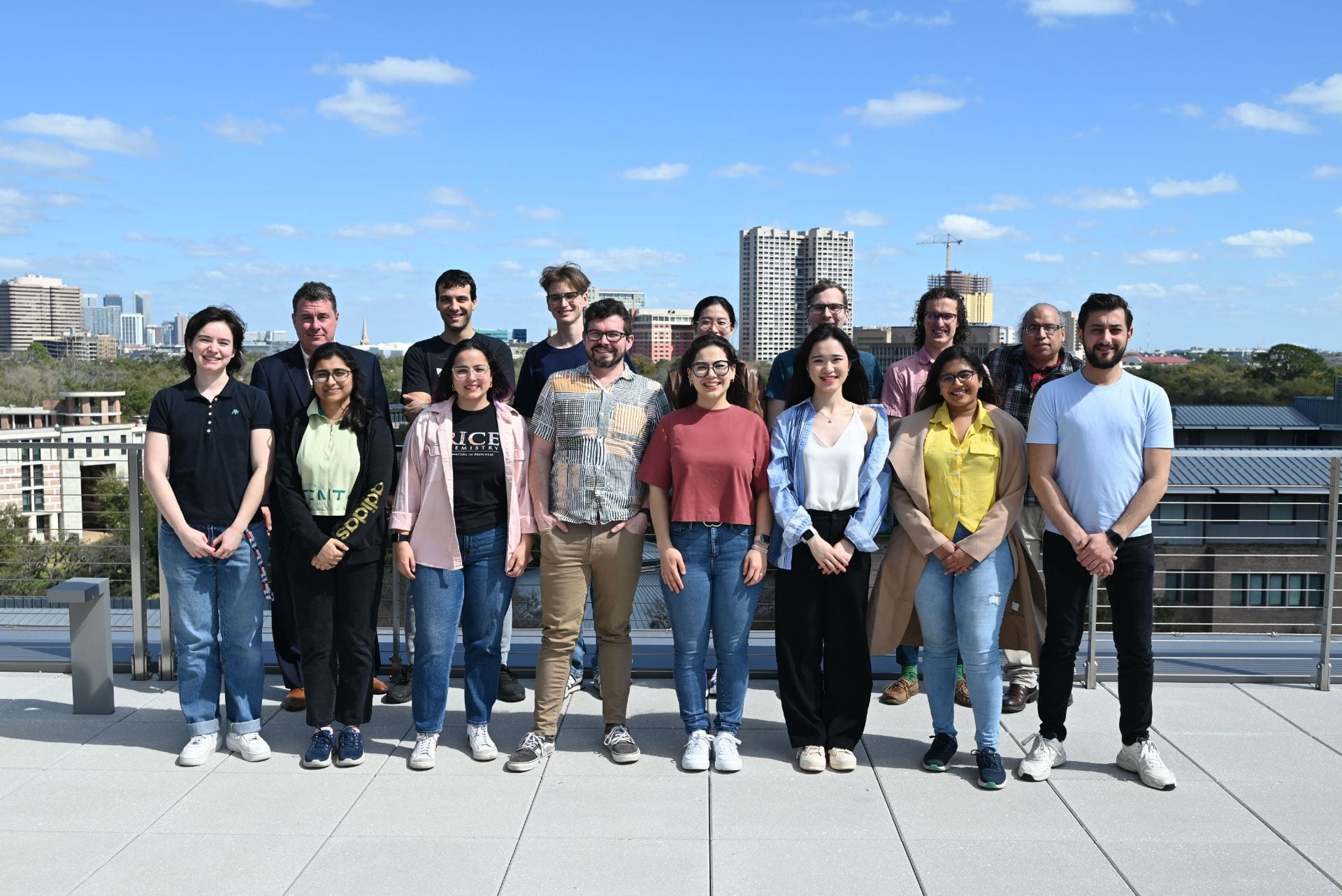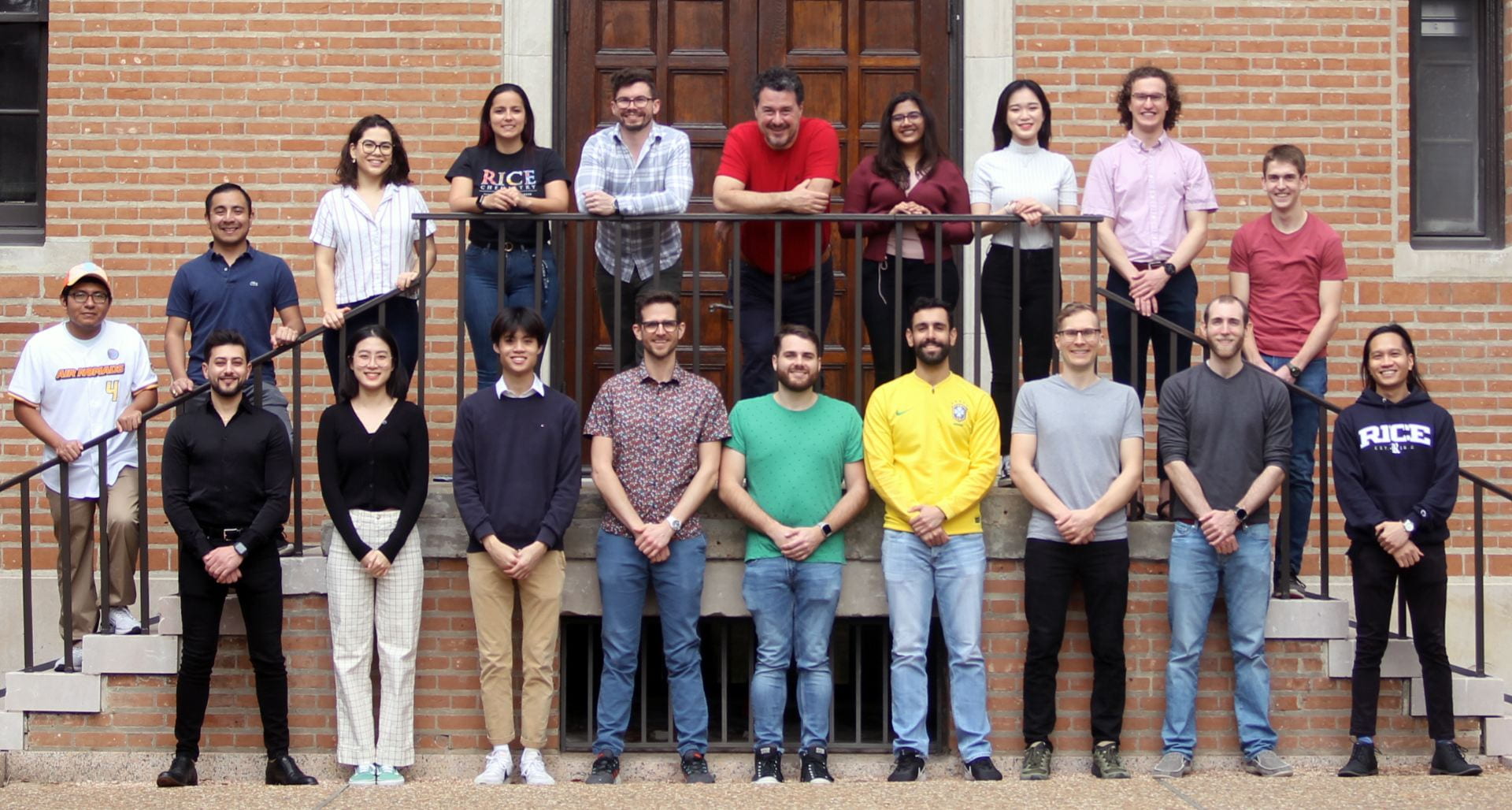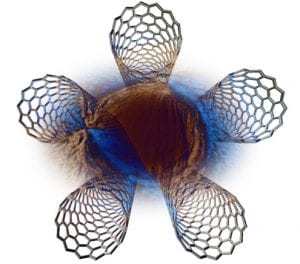The cf2 group, led by Prof. Matteo Pasquali, is developing sustainable high-value carbon materials (primarily CNTs and structures made from them) for metals displacement, paired with the production of clean hydrogen. Faced with the existential threat of global warming, the world needs to reduce greenhouse gas emissions in all sectors of society. The energy-intensive extraction and refining of metal ores represents one of the most significant sources of CO2, yet these materials are essential for use in construction, power transmission, and transportation. Our CNT synthesis method splits CH4 (or other abundant hydrocarbon feedstocks) into solid CNTs and H2. This method has the dual advantage sequestering carbon as a solid that would otherwise be released as CO2 if burned, and generating hydrogen that can be used as a clean fuel. In this case, the solid carbon nanotubes (CNTs) are processed in the Pasquali lab to create fibers that are as soft and flexible as silk, stronger than the Kevlar, and almost as conductive as copper (on a mass basis). As such, CNT fibers have several advantages over metals for a variety of applications (e.g., electrical contacts for biomedical sensing, long range power transmission, high strength cables, weight reduction in land and aerospace vehicles). Furthermore, these CNT materials are completely recyclable with minimal material property loss in fibers made from recycled vs pristine CNTs. By coupling synthesis, material development, and recycling of CNT materials, the Pasquali lab is at the forefront of the effort to de-COX-ify our world.

Most engineered materials are processed in the liquid state; they are complex fluids because they possess intrinsic length scales that are well-separated from the macroscopic length scales of the process (usually tens of micrometers to meters) and the sub-nanoscopic length scales of the solvent. For example, in polymer solutions and melts the intrinsic length scale is the length of the polymer (usually hundreds of nanometers to a few micrometers), which is well separated from the finer length scales (solvent diameter in solution, polymer diameter in melts). The large-scale microstructural features relax on timescales that overlap the flow time scales; thus, the dynamic morphology can differ dramatically from the equilibrium one, and this changing morphology affects the flow and produces intriguing nonlinear dynamical phenomena that are not observed in flowing liquids of low-molecular-weight. The Pasquali group improves its understanding of CNT materials and their solutions by interacting with them across this whole range of length and time scales: from atomic resolution TEM to the ~100 meter lengths of CNT fiber; and from millisecond to hours long dynamic rheological behavior.
We are continuously looking for exceptional researchers to help us make the world a better place through advances in scientific understanding and technological applications. If you are interested in joining our group as a postdoctoral researcher, please send your CV and a statement of interest to Mingrui (Lily) Gong (mg111@rice.edu), Dr.Yang Lu (yl357@rice.edu), and Dr.Eldar Khabushev (ek65@rice.edu). In the upcoming years, we are actively looking for researchers with backgrounds and research interests relative to these fields:
- Phase behavior, fluid mechanics, and rheology of polymers to investigate CNT behavior in various solvents
- Complex fluids (liquid crystals) and processing flows (fiber and film characterization) to understand and develop applications for high-concentration mixings and manufacturing of macroscopic materials
- Doping technique on solid-state transport and diffusion through porous media to explore and control the electrical and thermal properties of CNT fibers and cables in electronic devices and electrical power transmission
- Polymer physics and composites manufacturing/characterization to understand and control the stress transfer between CNT fibers and thermoplastic polymers, the behavior of CNT composites, and the end-of-life recyclability of these materials.
- single-molecule microscopy, polymer dynamics, and soft matter physics (experimental and theoretical) to investigate the single-molecule behavior of a low-flexibility rod in a polydomain liquid crystal formed by other rods
If you are interested in joining us as a Ph.D. student, please visit our departmental recruiting webpage here. If you want to learn more about the lab and related upcoming projects, please also feel free to send emails to Mingrui (Lily) Gong (mg111@rice.edu).
If you represent a company interested in investing in our research projects or wish to learn more, please directly contact our principal investigators, Dr. Matteo Pasquali (mp@rice.edu) and Dr. Glen Irvin Jr. (gci1@rice.edu).
Connect with Our Cf2 Group
Thank you all for your interest!
For questions related to post-doctorate and Ph.D. programs and projects, please feel free to contact Mingrui (Lily) Gong (mg111@rice.edu), Dr. Yang Lu (yl357@rice.edu), and Dr.Eldar Khabushev (ek65@rice.edu).
For business-related topics or investment inquiries, Dr. Matteo Pasquali (mp@rice.edu) and Dr. Glen Irvin Jr.(gci1@rice.edu) are the appropriate contacts.
 (Group Photo taken in the Spring of 2024)
(Group Photo taken in the Spring of 2024)
 (Group photo taken in the Spring of 2022)
(Group photo taken in the Spring of 2022)
